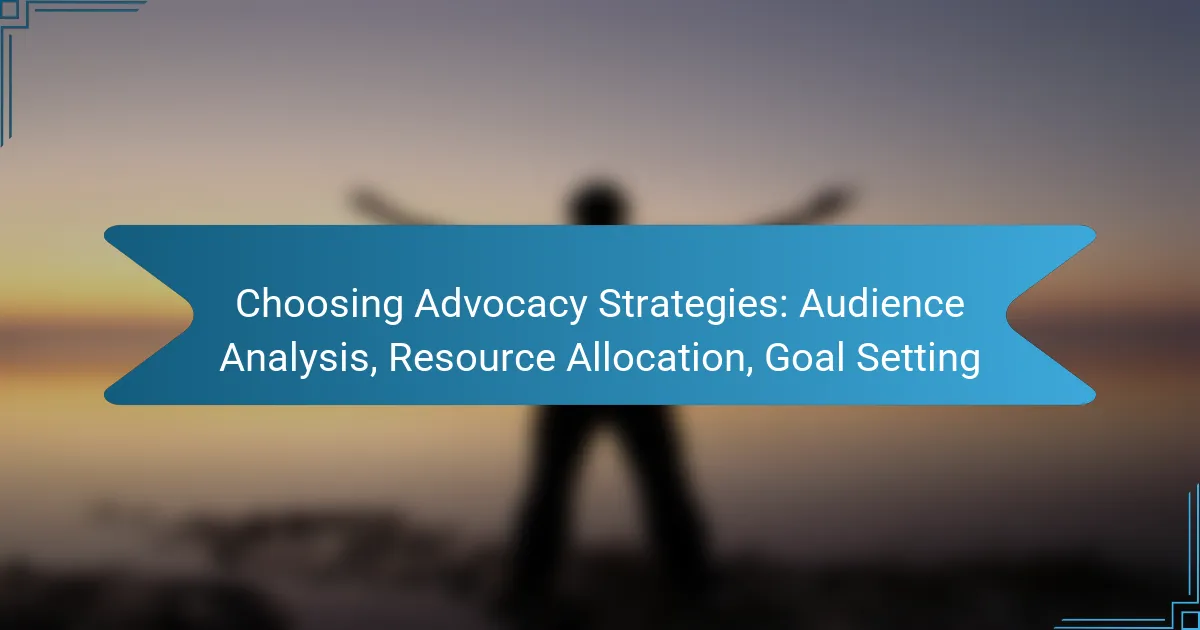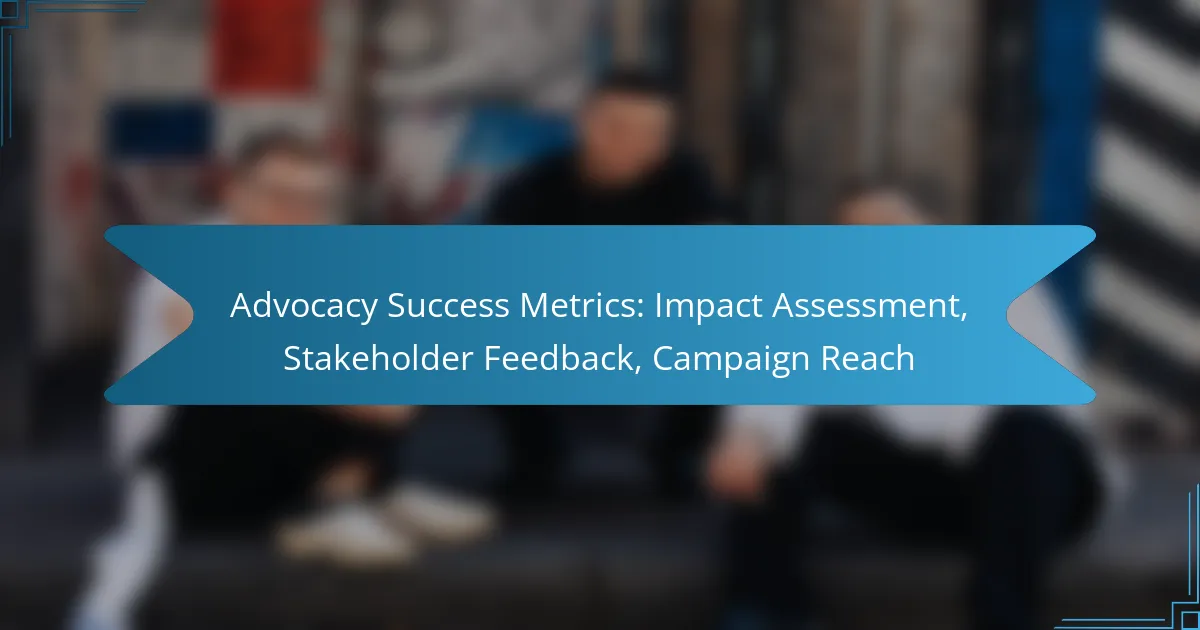Grassroots movements play a crucial role in fostering community engagement by empowering individuals to take collective action on local issues. By focusing on specific concerns, these movements cultivate a sense of ownership among community members, driving policy change and raising awareness through direct engagement and innovative outreach strategies.
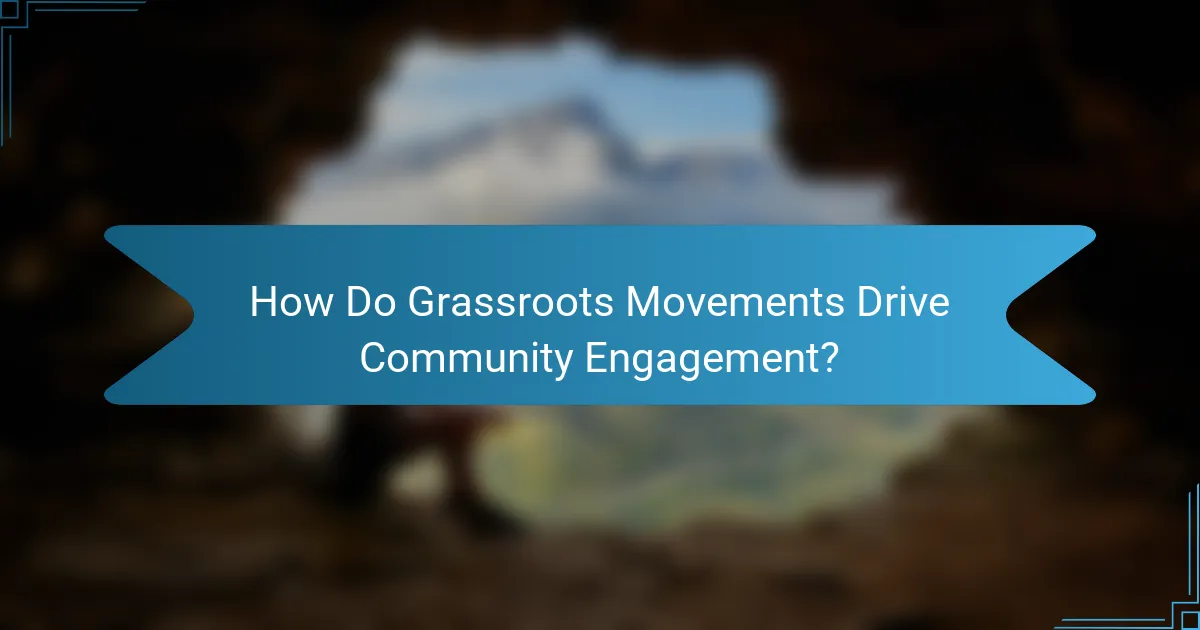
How Do Grassroots Movements Drive Community Engagement?
Grassroots movements drive community engagement by mobilizing individuals at the local level to participate in collective action. These movements often focus on specific issues, fostering a sense of ownership and responsibility among community members.
Increased local participation
Grassroots movements enhance local participation by encouraging residents to take an active role in decision-making processes. This can include attending town hall meetings, participating in community forums, or joining local advocacy groups.
For example, a neighborhood association might organize clean-up days or community gardens, which not only beautify the area but also bring people together. Engaging in these activities can lead to higher voter turnout and greater involvement in local governance.
Building social networks
These movements help build social networks by connecting individuals with shared interests and goals. As people collaborate on initiatives, they develop relationships that strengthen community ties.
Social networks can facilitate information sharing and resource pooling, making it easier for community members to support one another. For instance, a local environmental group might create a platform for residents to exchange tools and advice on sustainable practices.
Empowering marginalized voices
Grassroots movements play a crucial role in empowering marginalized voices by providing a platform for those often overlooked in traditional political processes. This empowerment can lead to increased visibility and advocacy for underrepresented communities.
For example, initiatives focused on racial justice or [censured] rights often emerge from grassroots efforts, allowing individuals to share their experiences and influence policy changes. By amplifying these voices, movements can drive meaningful change and foster inclusivity within the community.

What Strategies Are Effective for Policy Change?
Effective strategies for policy change include direct engagement with decision-makers, mobilizing community support, and raising awareness through various channels. These approaches can create a significant impact on local governance and influence policy outcomes.
Lobbying local government
Lobbying local government involves directly interacting with elected officials and their staff to advocate for specific policy changes. This can be done through meetings, phone calls, or written communications, emphasizing the benefits of the proposed changes for the community.
To be effective, grassroots organizations should prepare clear, concise messages and provide supporting data or testimonials. Building relationships with local representatives can also enhance credibility and increase the likelihood of favorable outcomes.
Organizing petitions
Organizing petitions is a powerful way to demonstrate public support for a policy change. Petitions can be collected both online and offline, allowing community members to express their opinions and call for action from local authorities.
When creating a petition, it is essential to clearly state the issue, the desired change, and the reasons why it matters. Aim to gather signatures from a diverse group of supporters to show broad community backing, which can influence decision-makers.
Engaging in public forums
Engaging in public forums provides an opportunity for community members to voice their concerns and advocate for policy changes in a structured environment. These forums can include town hall meetings, public hearings, or community workshops.
To maximize impact, participants should prepare talking points and be ready to discuss the implications of the proposed policies. Actively listening to feedback from others can also help refine arguments and build coalitions with like-minded individuals and groups.
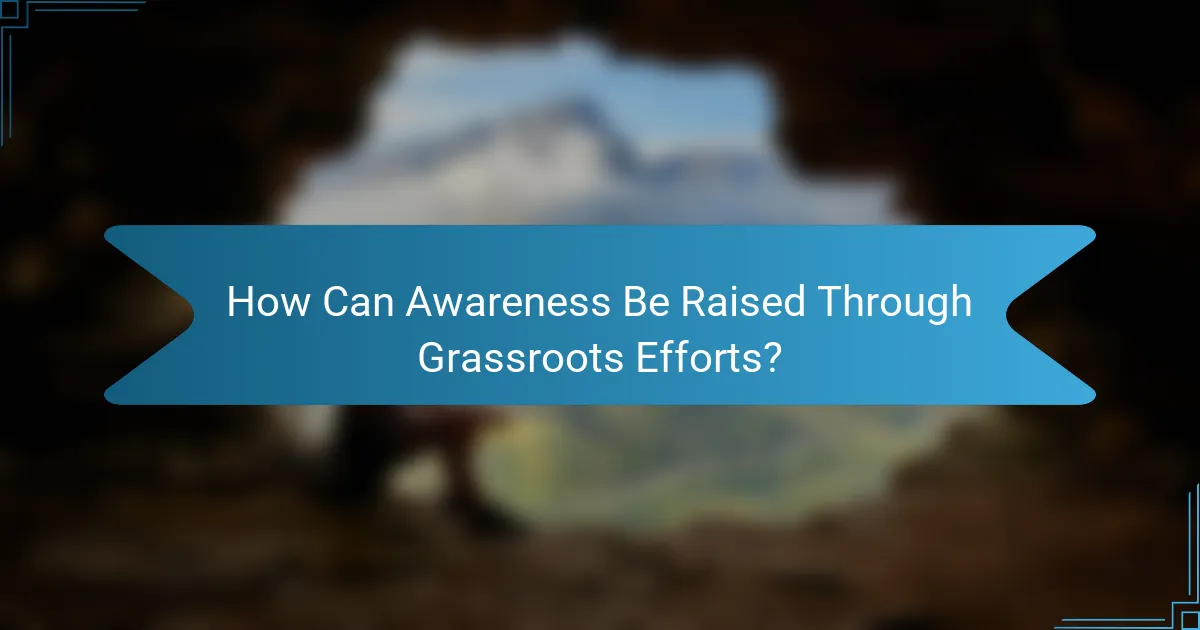
How Can Awareness Be Raised Through Grassroots Efforts?
Awareness can be effectively raised through grassroots efforts by engaging communities, leveraging social media, and hosting events that resonate with local issues. These strategies foster connections and encourage collective action, leading to meaningful change.
Utilizing social media platforms
Social media platforms are powerful tools for grassroots movements to spread awareness quickly and widely. By creating shareable content and engaging posts, organizations can reach diverse audiences and encourage participation.
Consider using platforms like Facebook, Instagram, and Twitter to share updates, success stories, and calls to action. Regularly interacting with followers through comments and messages can build a sense of community and commitment.
Hosting community events
Community events are essential for raising awareness and fostering local engagement. These gatherings can take various forms, such as workshops, rallies, or informational sessions, providing a platform for direct interaction.
When planning events, focus on accessibility and inclusivity to ensure broad participation. Consider local venues that are easy to reach and promote the event through flyers, local media, and social media channels.
Creating informative content
Informative content, such as articles, videos, and infographics, can effectively convey key messages and educate the public about specific issues. This content should be clear, engaging, and tailored to the audience’s interests and needs.
Utilize local statistics and case studies to make the content relatable. Distributing this material through newsletters, social media, and community boards can significantly enhance awareness and understanding of the movement’s goals.
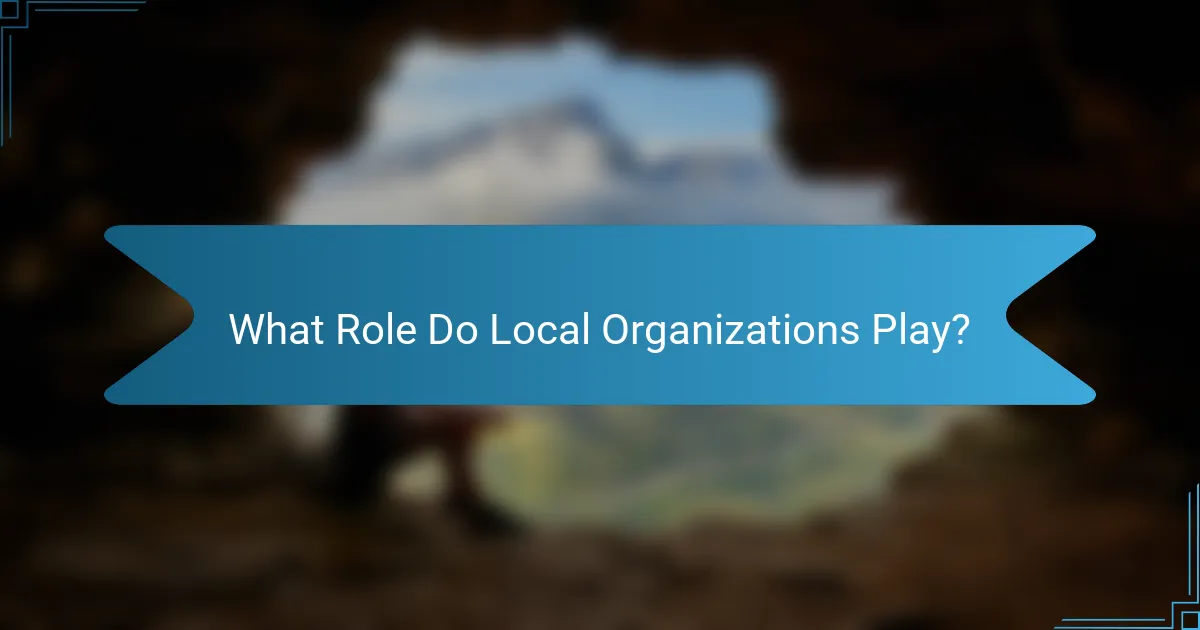
What Role Do Local Organizations Play?
Local organizations are vital in grassroots movements as they foster community engagement, drive policy change, and raise awareness. They serve as the backbone for mobilizing residents, providing a platform for collective action and advocacy.
Facilitating collaboration
Local organizations play a crucial role in facilitating collaboration among community members, stakeholders, and decision-makers. By organizing meetings, workshops, and events, they create opportunities for dialogue and partnership, helping to unify diverse voices around common goals.
For instance, a neighborhood association may host regular forums to discuss local issues, encouraging residents to share their perspectives and work together on solutions. This collaborative approach can lead to more effective advocacy and policy outcomes.
Providing resources and training
Local organizations often provide essential resources and training to empower community members. This can include workshops on advocacy techniques, access to funding opportunities, or information on navigating local government processes.
For example, a nonprofit focused on environmental issues might offer training sessions on how to engage with local policymakers or apply for grants. By equipping individuals with the necessary skills and knowledge, these organizations enhance the capacity of grassroots movements to effect change.
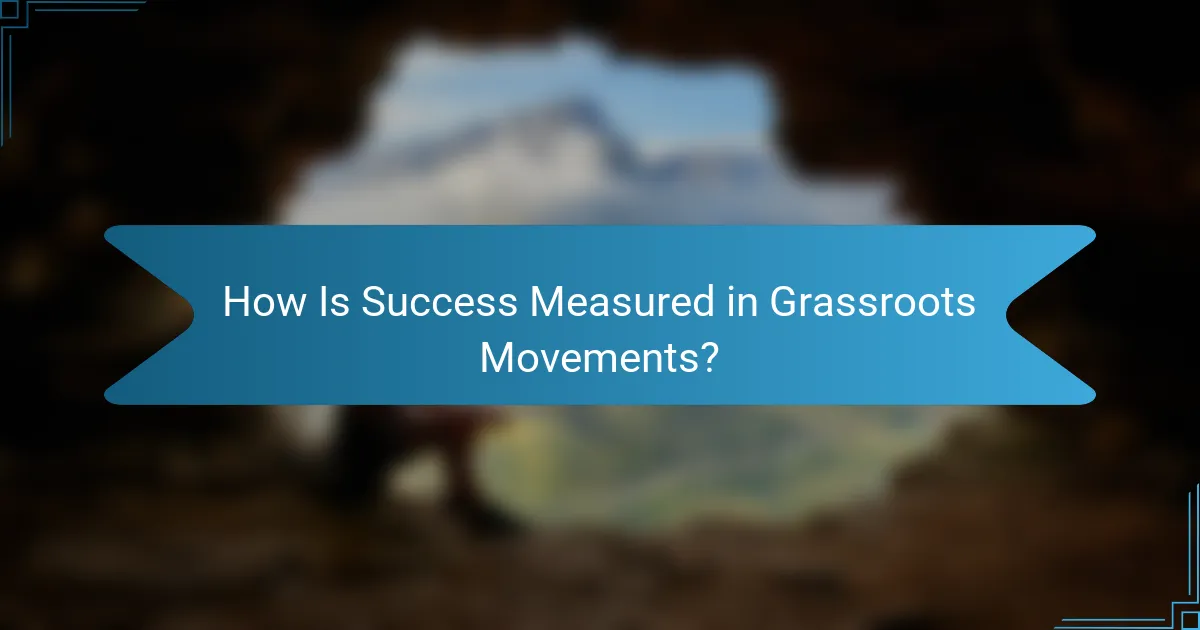
How Is Success Measured in Grassroots Movements?
Success in grassroots movements is often measured through tangible outcomes such as policy changes, increased community engagement, and heightened awareness of specific issues. Evaluating these factors helps determine the effectiveness and impact of the movement on its goals.
Tracking policy changes
Monitoring policy changes is crucial for assessing the success of grassroots movements. This involves documenting any new legislation, amendments, or shifts in policy that align with the movement’s objectives. For instance, if a movement aims to promote environmental sustainability, successful advocacy might be reflected in new regulations on emissions or waste management.
To effectively track these changes, grassroots organizations can utilize tools such as legislative tracking software, public records, and collaboration with policy analysts. Keeping a timeline of policy developments can help illustrate the movement’s influence over time.
Assessing community engagement levels
Community engagement levels are a vital indicator of grassroots movement success. This can be measured through participation rates in events, volunteer sign-ups, and social media interactions. For example, a movement that organizes community clean-up days can gauge success by the number of participants and the frequency of these events.
Surveys and feedback forms can also provide insights into community sentiment and involvement. Establishing clear metrics, such as aiming for a 20% increase in volunteer participation over a year, can help organizations set goals and evaluate their outreach efforts effectively.

What Challenges Do Grassroots Movements Face in the UK?
Grassroots movements in the UK encounter several significant challenges that can hinder their effectiveness and sustainability. Key issues include limited funding opportunities and resistance from established entities, which can stifle innovation and community engagement.
Funding limitations
Funding limitations are a primary obstacle for grassroots movements in the UK. Many organizations rely on small donations, crowdfunding, or grants, which can be unpredictable and insufficient for long-term projects.
To navigate funding challenges, grassroots groups should diversify their funding sources. This may include applying for local government grants, seeking partnerships with businesses, or launching fundraising campaigns that engage the community. Understanding the competitive landscape for grants can also help organizations identify the most suitable opportunities.
Resistance from established entities
Resistance from established entities, such as local governments or large corporations, can significantly impact grassroots movements. These entities may view grassroots initiatives as threats to their interests or may be reluctant to change existing policies.
To overcome this resistance, grassroots movements should focus on building coalitions and fostering dialogue with established entities. Engaging in constructive conversations and demonstrating the benefits of proposed changes can help create a more collaborative environment. Additionally, showcasing successful case studies can provide compelling evidence to counteract skepticism.
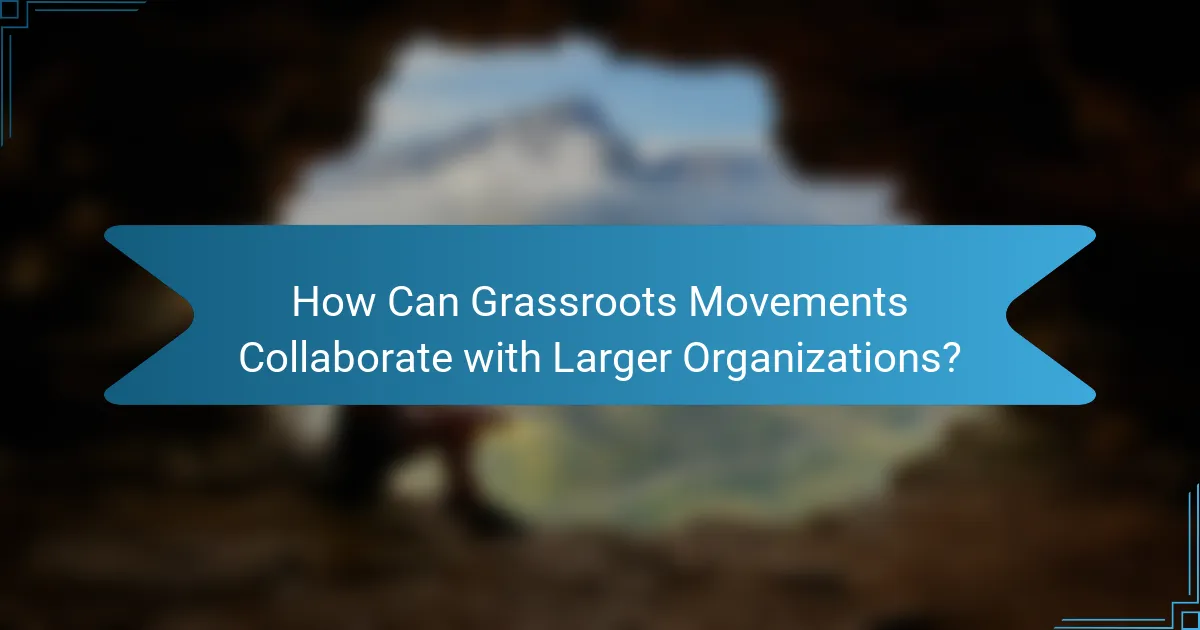
How Can Grassroots Movements Collaborate with Larger Organizations?
Grassroots movements can effectively collaborate with larger organizations by leveraging shared goals and resources. This partnership can enhance community engagement, amplify awareness, and drive policy change through combined efforts.
Identifying Common Goals
The first step in collaboration is identifying shared objectives between grassroots movements and larger organizations. Both parties should assess their missions and determine where they align, such as advocating for environmental protection or social justice.
For instance, a local environmental group may partner with a national organization focused on climate change. By aligning their goals, they can create a unified front that attracts more attention and resources.
Building Trust and Communication
Establishing trust is crucial for successful collaboration. Regular communication helps both sides understand each other’s strengths and limitations. Grassroots movements should openly share their community insights, while larger organizations can provide strategic guidance and resources.
Consider setting up regular meetings or joint workshops to foster relationships and ensure that all voices are heard. This approach can prevent misunderstandings and build a solid foundation for collaboration.
Leveraging Resources and Networks
Collaborating with larger organizations allows grassroots movements to access additional resources, including funding, expertise, and wider networks. This can significantly enhance the impact of their initiatives.
For example, a small community health initiative could partner with a national health organization to gain access to grants and training programs. This partnership can help the grassroots movement scale its efforts and reach more individuals.
Measuring Impact Together
To ensure the collaboration is effective, both parties should establish metrics to measure their combined impact. This could include tracking changes in community awareness, policy shifts, or engagement levels.
Setting clear, quantifiable goals helps maintain accountability and allows both organizations to celebrate successes together. Regularly reviewing these metrics can also inform future strategies and adjustments in their collaborative efforts.


